The Collector's Daughter Read online
Page 30
Huge love to my traveling pal Louise Kerr, who came to Egypt with me and is always the perfect person to have an adventure with. Thanks also to Richard Hughes for accompanying me on a research trip to Highclere, which involved drinking cocktails on the lawn on a glorious summer’s day. Love to Tracy Rees for reading the final draft and making suggestions, as well as to my wonderful friend Lor Bingham for research, editorial, and enthusiastic social media support.
I have met many British book bloggers in person at launches and events over the years. They are a lively bunch, united by their love of reading, and I’m constantly amazed at the work they put into reviewing and promoting their reviews. Huge thanks to them, as always.
This time I would also like to thank the American bloggers and podcasters who have reached out and welcomed me onto their sites: Ashley Hasty of Hasty Book List; Sharlene Martin Moore and Bobbi Dumas of Romance of Reading; Tammy Meadal Underhill of Peace Love Books; Kristy Barrett of A Novel Bee; Cindy Burnett of Thoughts from a Page; Hank Garner of Author Stories; Michelle Marie Dunton Cronauer; Melody Hawkins of Oh the Books She Will Read; Victoria Wood of BiblioLifestyle; Barbara Bos of Women Writers, Women’s Books; and bookstagrammers too numerous to mention—grateful thanks to you all.
Thank you to the Historical Writers Association, especially Imogen Robertson and Frances Owen, for their generous support, and to the Historical Novel Society for making their conferences such a fun place to connect with other historical authors.
During the time of Covid, friendships were more important than ever, so I’m sending love to all the author pals and non-author pals who have made the months pass more quickly. And to Karel Bata: I can’t think of anyone I would rather have been in lockdown with.
P.S. Insights, Interviews & More . . .*
About the Author
* * *
Meet Gill Paul
About the Book
* * *
Historical Afterword
Further Reading
Reading Group Guide
Photographs
About the Author
Meet Gill Paul
GILL PAUL is the bestselling author of ten historical novels, many of which describe real women she thinks have been overlooked or misjudged by historians. Jackie and Maria, published in August 2020, looks at the way the lives of former First Lady Jackie Kennedy and opera singer Maria Callas began to overlap as they became rivals for Greek shipping millionaire Aristotle Onassis. She has written two novels about the last Russian royal family: The Secret Wife, published in 2016, which tells the story of cavalry officer Dmitri Malama and Grand Duchess Tatiana, the second daughter of Russia’s last tsar; and The Lost Daughter, published in August 2019, which tells of the attachment Grand Duchess Maria formed with a guard in the house at Ekaterinburg, where the family was held from April to July 1918.
Gill’s other novels include Another Woman’s Husband, about links you may not have been aware of between Wallis Simpson, later the Duchess of Windsor, and Diana, Princess of Wales; Women and Children First, about a young steward who works on the Titanic; The Affair, also known as The Secret Affair, set in Rome in the early 1960s, as Elizabeth Taylor and Richard Burton fall in love while making Cleopatra; and No Place for a Lady, about two Victorian sisters who travel to the Crimean Peninsula during the war there from 1854 to 1856 and face challenges beyond anything they could have imagined.
Gill studied medicine at Glasgow University, then English literature and history, before working in publishing. She speaks at libraries and literary festivals about subjects ranging from the British royal family to the Romanovs and the Kennedys. She lives in London, where she loves wild swimming year-round.
To contact Gill on social media:
/GillPaulAuthor
@GillPaulAUTHOR
gill.paul1
Discover great authors, exclusive offers, and more at hc.com.
About the Book
Historical Afterword
Lord Carnarvon, Eve, and Howard Carter outside the tomb in 1922.
Harry Burton (Photographer), Public domain, via Wikimedia Commons
A photograph was taken outside Tutankhamun’s tomb in November 1922, showing two men dressed in similar three-piece suits with bow ties and wearing hats trimmed with ribbons. Alongside them stands a young woman in a drop-waisted coat, a dark hat, and lace-up shoes with little heels, and that woman fascinates me. The story usually told about the discovery of the tomb is that of the partnership between archaeologist Howard Carter and his sponsor, Lord Carnarvon, but Lady Evelyn Herbert was there too, and she deserves her place in the history books.
The trio’s illicit entry into the tomb before the official opening is now common knowledge. Eve told her uncle, Mervyn Herbert, what they had done, and he wrote about it in his journal, which is available in the Oxford University archives. She also wrote to Howard Carter afterward, saying “I can never thank you sufficiently for allowing me to enter its precincts. It was the Great Moment of my life.”
I have used accounts of their “break-in” from various sources. Some say Pecky Callender was there but was too large to squeeze through the hole. Was Eve the first to crawl inside? According to the account of Thomas Hoving, director of the Metropolitan Museum, she was—and I very much hope it’s true.
The history books tell us very little about Eve beyond the bare facts. My fictionalization of her character is based on the lively woman we can see in photographs available online and contemporary accounts of her popularity. It must have taken guts to crawl inside the tomb in November 1922, especially for a girl who hadn’t seen much of the world outside her privileged upbringing at Highclere Castle and another family home at Bretby Park. Sir Alan Gardiner called her “a magnificent little girl full of pluck and common sense and devoted to her father” and that seemed to fit with what I knew about her. She was both friendly and brave—a winning combination.
We know Eve met Brograve at the Residency Christmas party in Cairo in 1919, that his brother, Edward, had died in the war, and that Brograve had served in the Life Guards. Why did they not marry till October 1923? I invented the story of a man scarred by his wartime experiences but it could easily have some truth in it because psychological trauma was common in the postwar era.
I have never believed the rumors, which are fleshed out in recent television dramatizations, suggesting Eve was romantically involved with Howard Carter. It simply doesn’t ring true. She had known him since she was six years old, and he was a friend of her father’s. He wasn’t a practiced philanderer with a smooth line in charm, but a crusty old bachelor who had dedicated his life to Egyptology. A letter she wrote him on Boxing Day 1922 is sometimes quoted as evidence of a romance, mainly because she calls him “my dear” and says at the end “I am panting to return to you,” signing off “My best love.” For me, the tone is one of breathless exuberance rather than passion. Arthur Mace called her “slangy,” as many young people were in the twenties. Throwaway endearments came easily to her.
There are two main sources for information on the family. Lady Fiona Carnarvon, wife of the current earl, has written several books, including Lady Almina and the Real Downton Abbey (2011) and Lady Catherine and the Real Downton Abbey (2013). They are full of interesting detail about life in the stately home that now provides a setting for the popular screen drama, but she brushes over the scandals and tragedies, and doesn’t mention the family rift after Lord Carnarvon’s death.
Retired civil servant William Cross, a lecturer in genealogy, has also written books on the family, including The Life and Secrets of Almina Carnarvon (2011) and Carnarvon, Carter and Tutankhamun Revisited (2016). These have a wealth of detail, not all of it flattering to the subjects. From William Cross I learned that Porchy argued with Almina over finances following Lord Carnarvon’s death and was angry over her hasty remarriage, and that she was not present at the christenings of either of his children, a fact confirmed by photographs. I learned that Eve had a difficult pregnancy, an
d that Brograve fell out with Almina around that time, while Eve tried to be the family peacemaker. And I learned about Eve’s car accident in July 1935 and that she suffered from recurrent strokes afterward, until her death on January 31, 1980.
William Cross also suggests that Carter and Carnarvon may have been gay, and that their relationship could have been a “romantic friendship.” If true, it would shed fresh light on their argument near the end of Lord Carnarvon’s life, and his subsequent letter of apology. H. V. F. Winstone reports in Howard Carter and the Discovery of the Tomb of Tutankhamun (2008) that there were whispers among staff at the British Museum that Carter might be “an Oscar Wilde type.” (In 1895 Wilde was sentenced to two years’ hard labor for “gross indecency.”)
Since my story is told from Eve’s and Brograve’s points of view, there was no need to explore this rumor, since neither was likely to have been aware if Eve’s father and Howard Carter were repressing their true sexuality. Lord Carnarvon stayed in Castle Carter for lengthy periods but it’s unthinkable that the two shared a bed, because Howard’s Egyptian houseboys would have discovered them and the risks were too great. I think it’s more likely that they were affectionate friends with a lot of interests in common. The distance in Lord and Lady Carnarvon’s marriage is easily explained by their very different interests and personalities, plus the fact that it was a match arranged for expediency rather than love. If he were gay and unable to live life as a gay man, it adds another layer of tragedy.
Almina was a pocket-sized force of nature, a woman of strong opinions who campaigned against the Liberals in the 1910 general election, organized wildly lavish parties at her various homes, started her own wartime hospital, then relaunched it after the war to cater to her aristocratic friends. She found a way of having a fulfilling career in an era when women of her class did not work, although her hospital was always bankrolled by her Rothschild inheritance and did not make a profit. As I hint in the novel, it may well have helped girls who found themselves in trouble: her nephew, novelist Evelyn Waugh, referred to it as “Almina’s abortionist parlor.”
We can hardly blame her for remarrying eight months after the death of Lord Carnarvon, a husband with whom she had never been in love, but pursuing the court case with Dorothy Dennistoun was ill-advised. Being forced into bankruptcy by her own son must have been devastating for a woman who set such store by her position in society, and there were many aristocratic friends who would not receive her afterward. All in all, Almina was a formidable character but she can’t have been an easy mother, so it’s a huge credit to Eve that they stayed friends until Almina’s death in 1969, often lunching together at the Ritz.
Brograve was a Conservative Member of Parliament from 1931 to 1945, and chairman of Pyrotenax Ltd. from 1936 to 1962. I changed the timeline to have him starting this copper cabling company in the 1920s. Call it novelist’s license!
I also changed the date when some Egyptian artifacts were found in boarded-up cupboards at Highclere. It actually happened in 1988, more than eight years after Eve’s death, but in my novel I couldn’t resist letting her be there when they came to light.
Who owns archaeological finds?
It seems self-evident to us in the twenty-first century that significant ancient artifacts should belong to the country in which they have been found, as part of the cultural heritage. We might enjoy viewing treasures from different nations and cultures in our museums, but it is hard to justify their presence if they were looted by colonial ancestors. Successive Greek governments have been vociferous in demanding that the British Museum return the marble sculptures that the 7th Earl of Elgin removed from the Parthenon between 1801 and 1812. The same arguments apply to Egyptian antiquities and those of many other nationalities that are housed in museums in foreign lands. But, as is discussed in the novel, it was much less clear-cut in the nineteenth and early twentieth centuries, when many of the great sites were being excavated.
Heinrich Schliemann found a cache of gold during his excavations at Troy in 1871–73, which he believed to be the ancient “treasure of Priam” mentioned in Homeric epics. He clearly saw it as a case of finders keepers and smuggled it out of Turkey, but his theft was discovered after his wife was seen at a party wearing some of the jewelry. Berlin museums acquired most of the hoard, then it was snatched by the Red Army after they occupied the city in 1945, and is now on display in the Pushkin Museum in Moscow, where it seems likely to remain.
Schliemann was working a few decades before Howard Carter, but Sir Charles Woolley was excavating the Royal Tombs of Ur, in modern Iraq, from 1922 to 1934, at the same time that Carter was cataloguing Tutankhamun’s tomb. Woolley found sixteen royal tombs full of magnificent gold jewelry, musical instruments, weapons, and amulets dating back more than four thousand years. A substantial proportion of these treasures ended up in the British Museum or the University of Pennsylvania Museum of Archaeology and Anthropology, since they had sponsored his dig. It was simply accepted practice at the time.
It’s beyond doubt that Howard Carter took many items from the tomb of Tutankhamun. One report has him handing out souvenirs to guests at a party there in December 1922. In his defense, he believed that, under the terms of the concession he had negotiated, Lord Carnarvon would be awarded a share of the finds. Egyptian independence from British rule in February 1922 muddied the water, but the concession remained binding. However, in 1924 an Egyptian court found that Carter had broken the terms of the concession when he closed the tomb in the middle of a fracas about whether dignitaries’ wives were allowed to visit. He was locked out, and had to renegotiate the concession in order to return the following year. In the new deal the Egyptians got all rights to the tomb contents, while Almina was awarded the sum of around £36,000 to cover the investment she and her late husband had made into the excavation.
The discovery of the tomb made Carter an international celebrity in the 1920s. He was given an honorary degree by Yale University, but he was never honored by his homeland, although Charles Woolley received a knighthood for his work at Ur. Howard could be brusque and didn’t kowtow to authority, he wasn’t a member of the upper class, and there were those whispers about his sexuality. Simply being unmarried and childless made him an oddity. He was not quite an establishment figure, not the type they wanted to add to the honors list.
In fact, his work in the Valley of the Kings was phenomenal for its era, and the records he left were more comprehensive than had ever been kept on any previous digs, making a substantial contribution to the development of archaeology. Many items that he took from the tomb are on display in foreign museums today—but I find it intriguing to think that some might still be sitting on the mantelpieces of private collectors.
The curse of Tutankhamun
A 2019 survey found that 20 percent of Americans believe that ghosts “definitely exist” while another 25 percent think they “probably exist.” In the UK in 2018, three in five people surveyed claimed to have seen a ghost. Psychic mediums publish books, appear on television shows, and hold séances all over the world, so the demand is still there, just as it was back in the 1920s after so many families lost loved ones in the Great War or in the deadly Spanish flu epidemic of 1919–20.
My description of Eve’s visit to the Society for Psychical Research is based on a visit I made there after my mother’s death, something she had asked me to do. Founded in 1882, this organization continues to research psychic phenomena to this day. For more information, see their website spr.ac.uk.
If spirits can contact us from beyond the grave, is it possible that malign spirits can harm us? Marie Corelli and Sir Arthur Conan Doyle both spoke out about the dangers of the “curse of Tutankhamun” in the 1920s. It wasn’t a new concept. Back in the nineteenth century, there had been many stories about curses in Egyptian tombs, including Louisa May Alcott’s 1869 tale “Lost in a Pyramid: The Mummy’s Curse.” When the discovery of Tutankhamun’s tomb hit the headlines, it wasn’t long before the tabloid p
ress—banned from the tomb because of Lord Carnarvon’s exclusive deal with The Times—jumped on the story.
The bizarre or unexplained deaths of people who had visited the tomb may sound too many to be coincidental (there were more than I could cram into the novel), but you have to take into account the tens of thousands who were given a tour of the tomb in those early years. Perhaps a more telling statistic is that six of the twenty-six people present when the burial chamber was officially opened died in the following decade. Two of them—Lord Carnarvon and Mervyn Herbert—died as the result of a mosquito bite, with Mervyn succumbing to malaria in 1929. Whether you think there is anything odd about that probably depends on your point of view on spirits and curses, but Howard Carter was always scathing about the curse story. I’ve left it open-ended, so each reader can make their own decision.
Stroke and brain injury
Before the 1980s, precise diagnosis of brain injury and strokes was difficult because there were no CT scanners or MRIs that could picture soft tissues inside the body. That means when a patient presented with symptoms of stroke, doctors couldn’t tell if it was a brain hemorrhage, a clot that was causing a blockage in the blood supply to the brain, or a transient ischemic attack (TIA), when a clot caused a temporary blockage.
In the twenty-first century, a scan will be done as soon as someone arrives at hospital with stroke symptoms, because the treatments for each type of stroke are quite different. Scans will show the precise part of the brain affected, so doctors can tell which faculties will be impaired, whether it’s speech or language, balance or vision, and they can tailor treatments accordingly. In Eve’s day, the focus would have been on general rehabilitation through physiotherapy and speech therapy, as I have shown in the novel.

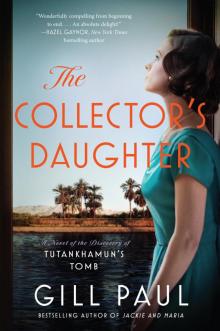 The Collector's Daughter
The Collector's Daughter The Lost Daughter
The Lost Daughter Jackie and Maria
Jackie and Maria The Affair
The Affair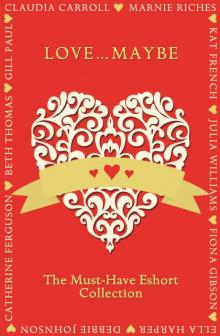 Love...Maybe
Love...Maybe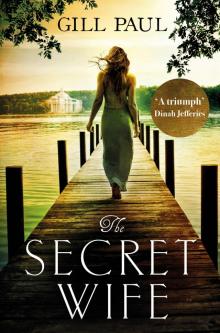 The Secret Wife
The Secret Wife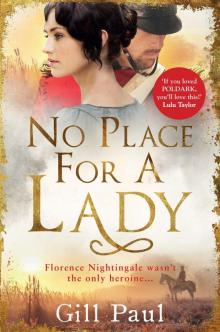 No Place For a Lady
No Place For a Lady Another Woman’s Husband
Another Woman’s Husband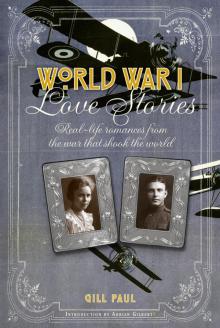 World War I Love Stories
World War I Love Stories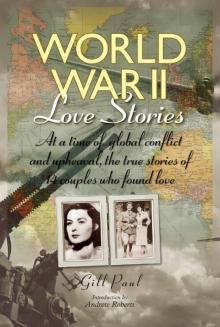 World War II Love Stories
World War II Love Stories